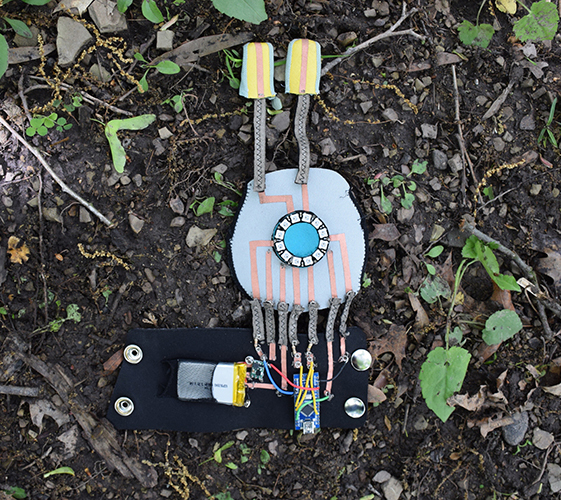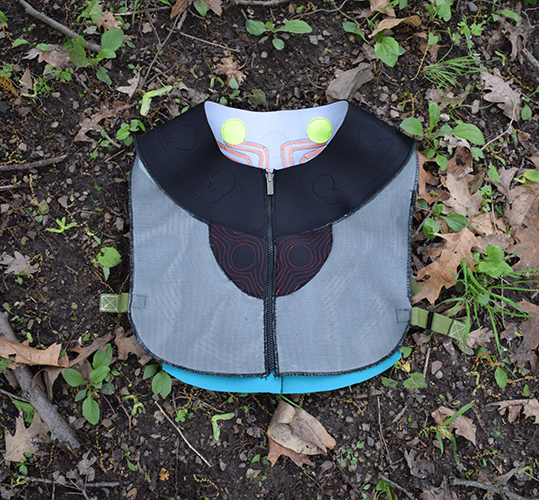As part of the Master of Tangible Interaction Design thesis research, Jen Liu produced a series of wearable tools for mushroom foraging. *"Collaborative Survival"*, a concept coined by anthropologist Anna Tsing, describes how our (human) ability to persist as a species is deeply entangled with and dependent upon the health of a multitude of other species. By applying this concept into design practice, it explores how technology can help humans forge and sustain livable collaborations.
The project explored collaborative survival within the context of designing tools for mushroom foraging and reflect on how interactive products can open new pathways for noticing and joining-with these entanglements towards preferable futures. In addition to highlighting three tactics-engagement, attunement and expansion-that can guide designs towards multispecies flourishing, the prototypes illustrate the potential for wearable technology to extend the body into the environment.
The series included:
- Hand-Substrate Interface - builds closer connections between tactile experiences and sensing of mycelia
- Data HarVest - a wearable tactile map that guides wearers to locations of community reported fungi growth. The device supports logging of contextual information during the foray with a GPS tracker to mark places where fungi growth is found.
- Spore Stepper - Soil collecting walking stick. After a foray, the sample can be germinated or DNA sequenced to determine what fungi species may be present
The work was presented at ACM CHI 2018 and was given a best paper award.



